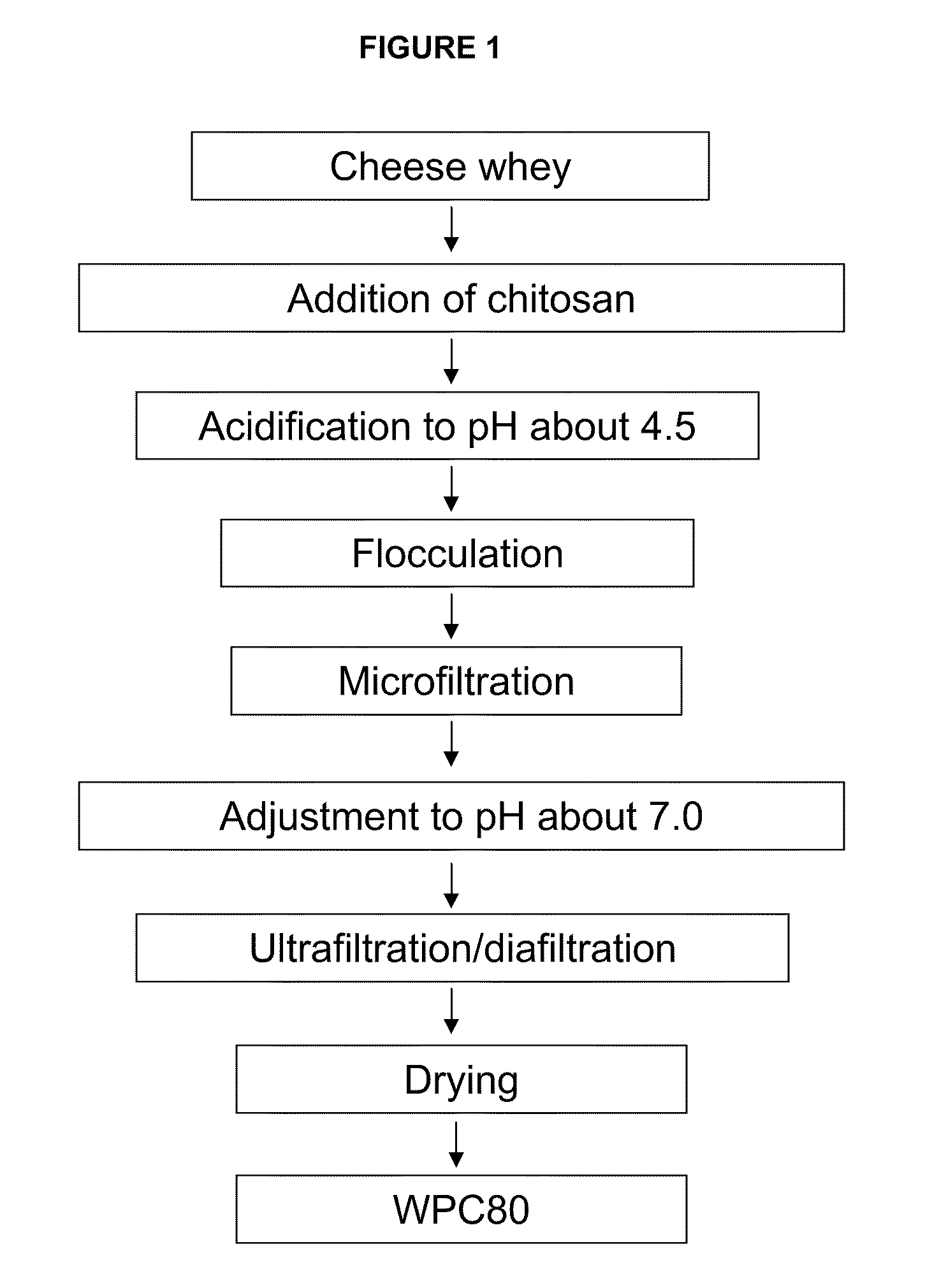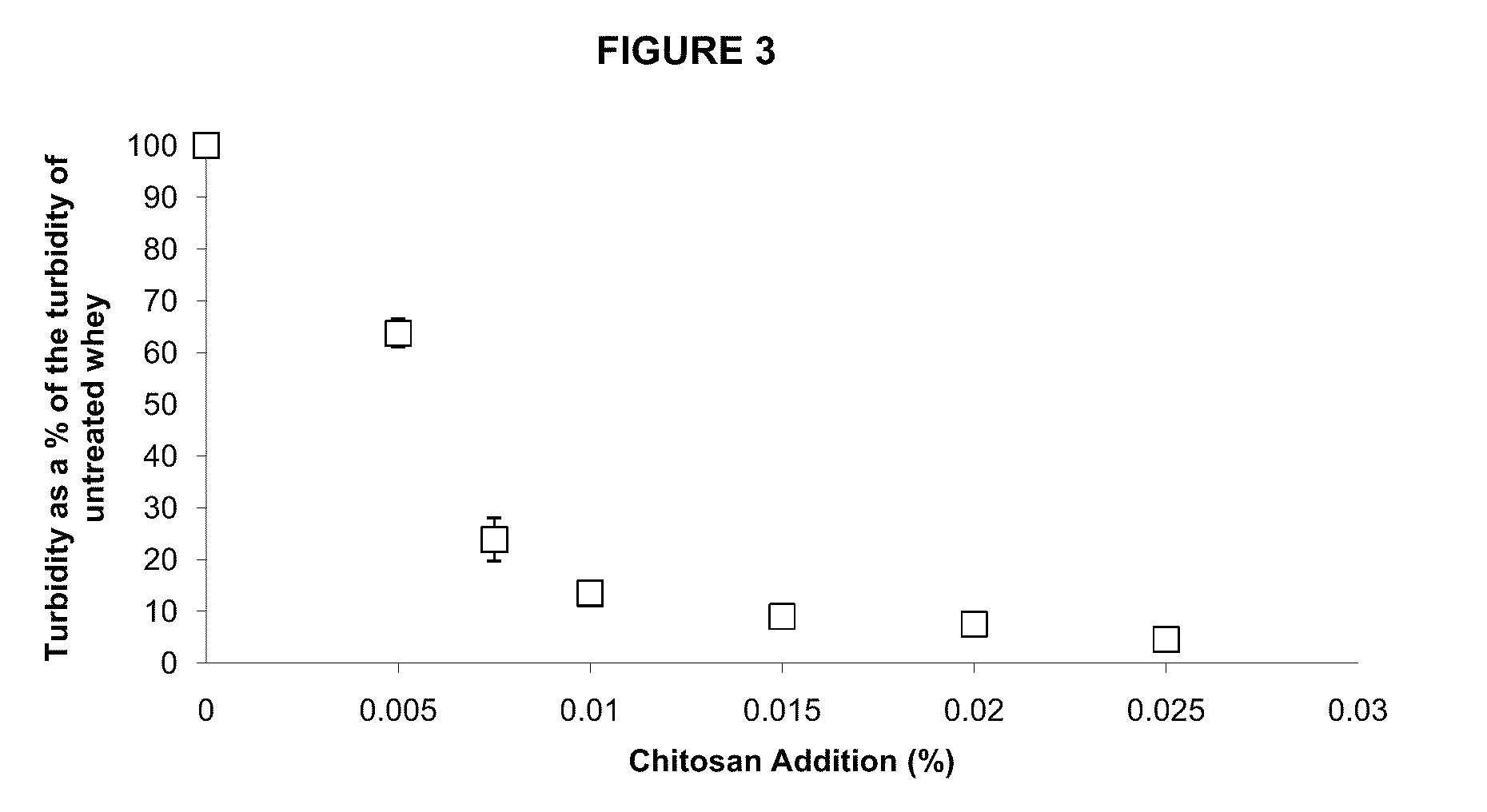Low Fat, Clear, Bland Flavored Whey Products
a whey product, clear technology, applied in the field of whey product production, can solve the problems of limiting its use, wpc has undesirable properties, and whey is difficult to withstand the adsorption of whey, and achieves the effect of reducing the amount of whey
- Summary
- Abstract
- Description
- Claims
- Application Information
AI Technical Summary
Benefits of technology
Problems solved by technology
Method used
Image
Examples
example 1
[0067]Materials and Methods. Various wheys were obtained from the Dairy Plant at the University of Wisconsin-Madison. These wheys included Cheddar, Monterey Jack, Swiss and Gouda. The details of the chitosan process used were as follows: chitosan treatment included the use of chitosan, a cationic polysaccharide, to selectively bind PL in the whey by electrostatic interaction and forms an insoluble precipitate. Chitosan has recently been confirmed as a GRAS (self-affirmed) food ingredient. The details of the chitosan treatment are described in Hwang and Damodaran, 1995, J. Agric. Food Chem. 43: 33-37 (and U.S. Pat. No. 5,436,014), and include: fresh pre-separated cheese whey (˜22-25° C.); pH adjustment to ˜4.5 by either acetic acid or concentrated HCl; addition of chitosan to concentration of 0.01˜0.02% (wt / wt); stirring for 10 min and incubating for 20 min; and centrifugation at 15-20° C. to collect supernatant. In an example, some samples were additionally subjected to microfiltrat...
example 2
[0099]This is an example of scaling up the process according to the present invention.
[0100]Complexation. Prior to the trial, about 600 grams (with 6.36% moisture) of grinded food grade chitosan (75-92% degree acetylation from Seltzer Chemical Inc.) was prepared into 1% chitosan in 10% acetic acid solution in three 5 gallons buckets. The 10% acetic acid was prepared by using Fisher glacial acetic acid and distilled water, and the grinded chitosan was dissolved overnight with an overhead mixer.
[0101]Cold 500 gallons of concentrated 19% total solids whey from local cheese plant was brought into UW-Madison Food Science / Wisconsin CDR pilot plant facility in two −250 gallons containers. The whey was then transferred into a 500 gallons tank, stirred by an overhead mixer, and warmed by using hot water through the jacket of the 500 gallons tank to 25° C. for chitosan-residual lipids complexation reaction. Based on the preliminary smaller scale study, it was expected that 0.021 % wt / liquid-w...
PUM
| Property | Measurement | Unit |
|---|---|---|
| pore size | aaaaa | aaaaa |
| pore size | aaaaa | aaaaa |
| temperature | aaaaa | aaaaa |
Abstract
Description
Claims
Application Information
 Login to View More
Login to View More - R&D
- Intellectual Property
- Life Sciences
- Materials
- Tech Scout
- Unparalleled Data Quality
- Higher Quality Content
- 60% Fewer Hallucinations
Browse by: Latest US Patents, China's latest patents, Technical Efficacy Thesaurus, Application Domain, Technology Topic, Popular Technical Reports.
© 2025 PatSnap. All rights reserved.Legal|Privacy policy|Modern Slavery Act Transparency Statement|Sitemap|About US| Contact US: help@patsnap.com



